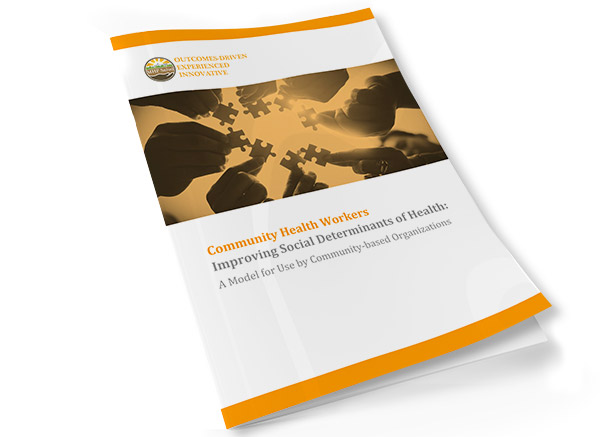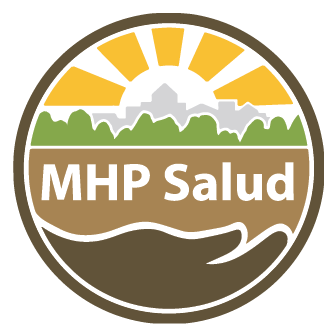Social Determinants of Health
Social Determinants of Health (SDOH) are the conditions in which people are born, grow, live, work, and age.1 These conditions can have a significant impact on an individual’s health. Many of these conditions are shaped by the distribution of money, power, and resources.2
The importance of social factors in people’s health has been recognized since the modern development of public health as a discipline during the 1800s.3 Further, the World Health Organization (WHO) identifies health as encompassing social well-being and describes inequality as a danger in the protection of health.2 Additionally, studies show that social and economic factors are the primary drivers of health outcomes and can shape and individuals’ health behaviors.4 This is further proof that addressing SDOH plays a key role in improving health outcomes for vulnerable communities.
Examples of SDOH include, but are not limited to:
Financial Security:
The ability to afford healthy foods, health care, housing, and transportation are essential to an individual’s overall health. Many vulnerable communities struggle with being able to provide enough jobs for their citizens, making steady employment a difficult prospect. Additionally, low-wage jobs tend to be more prevalent, contributing to the fact that individuals who are employed cannot afford the things they need to stay healthy.
Housing and Utilities:
Maintaining a healthy lifestyle is challenging in neighborhoods where there is a lack of safety, exposed garbage, and substandard housing. Additionally, in many low-income and rural communities, access to adequate plumbing and clean water are issues that present major health risks for individuals.
Transportation:
When individuals don’t have access to reliable transportation it can be difficult and costly to access needed health services. This is especially true for people who live in rural areas, where there are little to no public transportation options.
Food:
The availability and cost of healthy and nutritious food is a main factor in determining what people eat. However, in many rural and lower-income neighborhoods, there is limited access to grocery stores that sell affordable nutritious foods. Individuals in these areas rely on convenience and dollar stores which sell mostly cheap and highly-processed unhealthy foods.
Literacy and Language:
In many communities, individuals do not speak English as their primary language, and often there is a lack of resources that are offered in their primary language or a lack of organizations that offer translation services. This makes it difficult for members of that community to access the same services that others (who do speak English as their primary language) access without difficulty. Additionally, cultural beliefs about the source of illness, lack of familiarity with mainstream American medicine, and skepticism regarding its treatments can also be a barrier to care. Providing services that are culturally and linguistically is a challenge many health care and community organizations face.
Education:
The Centers for Disease Control (CDC) has found that people with higher levels of education are more likely to be healthier and tend to live longer.5 Children from low-income families and those who face social discrimination often struggle in school, leading to lower graduation rates from high school and a lower likelihood of going to college. Further, poorly performing schools within low-income neighborhoods and the ability to afford higher education contribute to the struggles with education. These factors mean that individuals within these communities are less likely to get safe, high-paying jobs and more likely to have health problems like heart disease, diabetes, and depression.5
Health care:
The availability of health information and health care services are essential for individuals trying to maintain a healthy lifestyle. However, access to these resources is unequally distributed in society. There are fewer hospitals and health centers in rural communities, as well as limited availability of resources for hospitals and health centers in urban communities.
How do CHWs Address Social Determinants of Health?
Community Health Workers (CHWs) are uniquely qualified to address the SDOH needs of their communities. They know how to reach individuals “where they are” and can actively go out into the community to identify individuals in need of services. They are able to relate to community members because they speak the same language and share a common culture. These qualities allow CHWs to build strong relationships and empower individuals to recognize and identify their needs. As such, input and feedback from CHWs can be beneficial in determining the key SDOH domains impacting a community. Further, CHWs can perform essential activities for organizations implementing programs that address SDOH, such as:
Lead a community needs assessment and collect data that could aid in the selection of final SDOH domains
Provide referrals to a service for a community member to address SDOH needs. For example, a family facing food insecurity can be referred to a local food bank
Attend an appointment with a community member or provide transportation to one
Provide ongoing communication and/or case management services
Provide follow up through phone call, home, or office visits

Start or Strengthen Your CHW Program
Many organizations are turning to CHW-led initiatives to address SDOH needs. We used our expertise to create a five-step collection of unique resources that provide guidance, information, and tips for organizations interested in or already invested in starting a Community Health Worker program. Each step a different part of the CHW program implementation process, from organizational readiness to hiring your first CHWs. Click the button below to get started.

CHWs from MHP Salud’s initiatives have used the Social Determinants of Health model to address and overcome critical needs in communities across the country :
CHWs in our Healthy Living Initiative provide support with chronic disease management and disseminate health information in the Hispanic communities, known as colonias, along the Texas southern border.
In this same region, CHWs in our Connect to Care Initiative locate families and individuals who may qualify for health insurance and provide the assistance they need, in Spanish, to fill out the necessary applications and verify they have the proper documentation.
In our Life Stages initiative, CHWs provide education and activities that strengthen the mental agility and physical ability of older adults, they provide breastfeeding education and support to new and expecting mothers, and they organize safe spaces for youth to discuss sexual health.
CHWs in our Healthy Relationship Initiative in Hillsborough County, Florida, provided social support and connections to resources to survivors of sexual assault, domestic violence, and intimate partner violence (IPV).
Through these initiatives and the work of Community Health Workers, challenges like language and literacy, food insecurity, health coverage, and the remote environment of the colonias themselves are significantly reduced. Additionally, data from these initiatives give our training team the knowledge they need to provide expert technical assistance to organizations that are looking to start or strengthen their own CHW-led initiatives to address SDOH needs in their communities.
Today, global and national organizations and individuals have developed a vast array of new literature on the Social Determinants of Health, including research on their importance, how to understand them and define them, and the development of tools to identify and address them.
Free Resources about Social Determinants of Health and CHWs

Community Health Workers: Improving Social Determinants of Health
Our resources cover steps organizations can implement to maximize their efforts and clarify how Community Health Workers address SDOH as part of their core, “day to day” role using a stepwise, iterative model. These resources are available for free! Use your email to sign up for our free resource portfolio to gain access.

Voices from the Field: Recruiting and Hiring for Social Determinants of Health Screening
This self-paced resource includes modules exploring the success and challenges of recruiting, hiring and retaining staff to provide screenings for Social Determinants of Health within community health centers. Learn from the voices of professionals in the field on how to address barriers and amplify the role of peer specialists.
- https://www.cdc.gov/socialdeterminants/index.htm
- (n.d.) About social determinants of health. Retrieved March 20, 2018, http://www.who.int/social_determinants/sdh_ definition/en/
- Engels, F. (1993). The condition of the working class in England. Oxford University Press, USA
- https://www.kff.org/racial-equity-and-health-policy/issue-brief/beyond-health-care-the-role-of-social-determinants-in-promoting-health-and-health-equity/

